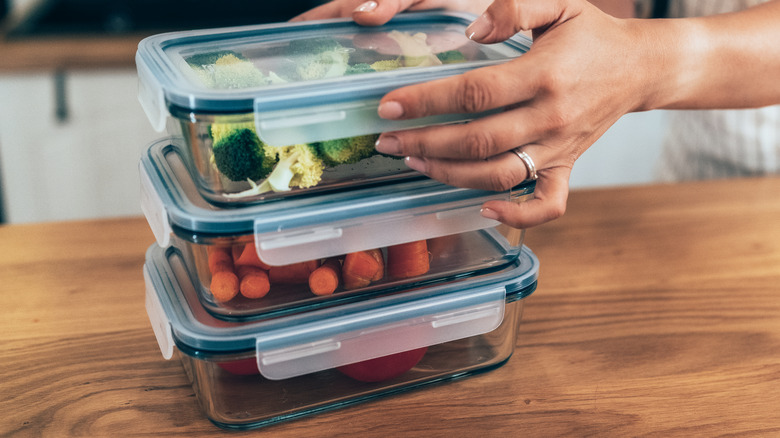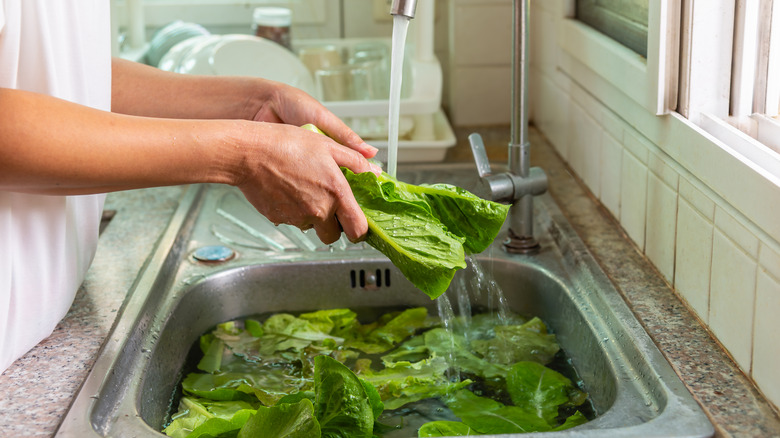The Veggies You Should Avoid When Meal Prepping
Getting ahead on your cooking tasks for the week is an absolute game changer, but there are some ingredients that are better left for day-of preparation. Food Republic spoke to registered dietician Lindsay Livingston of the blog The Lean Green Bean to get her advice on meal prepping vegetables. Livingston even teaches a course on mastering food prep and has lots of food prep resources on her site, so she knows a thing or two about how to make the most of your weekly produce haul.
"Avoid prepping vegetables you aren't going to use until much later," she explains. This is especially true of veggies that are easy to brown, such as avocados and eggplants. Additionally, Livingston says, "Potatoes may not be the best choice." Though cut spuds that turn dull pink, brown, gray, or black due to oxygen exposure are still safe to eat, the color can definitely be off-putting.
If you want to meal prep a dish with potatoes, you're better off cooking them at the beginning of the week. Consider using the component cooking meal prep hack here. Roast a large tray of simply seasoned potatoes that can be used in omelets, tacos, grain salads, or as a side for your protein of choice. You will maintain the versatility of raw spuds, but they won't deteriorate from oxidation. Alternatively, you can cover peeled potatoes in water with a bit of vinegar or lemon juice, which will slow down the browning process. However, you should only do this up to a day in advance.
Do not prep too much lettuce at once
For folks that love a leafy salad, you also may not want to chop all your greens for the entire week. "When I prep lettuce ahead of time, I only prep what I can use in two to three days," suggests Lindsay Livingston. Though crisp at first, it is particularly susceptible to losing its vibrancy. "The lettuce starts to brown where it's been cut," she says.
Whole lettuce heads will last longer in the fridge anyways. Depending on how fresh they were when purchased, they can keep for up to about two weeks. Just wrap the whole head in paper towels, store the lettuce in a resealable plastic bag, and stash it in the crisper drawer. Ultra-hydrating iceberg lettuce is the exception and should be stored in the plastic it is wrapped in.
For the leaves that you are prepping for that two to three day window, wash them whole under the tap, or cut them into pieces and swish around in a big bowl of cool water. Dry it well in a salad spinner or paper towels. You can also grab a dish towel, and use Ina Garten's hack for drying lettuce without a salad spinner. Place a paper towel in the bottom of a storage container or bag before loading in the washed lettuce, or use a produce saver. Your lettuce should stay discoloration-free for a couple days, and then you can prep the next batch later in the week.


